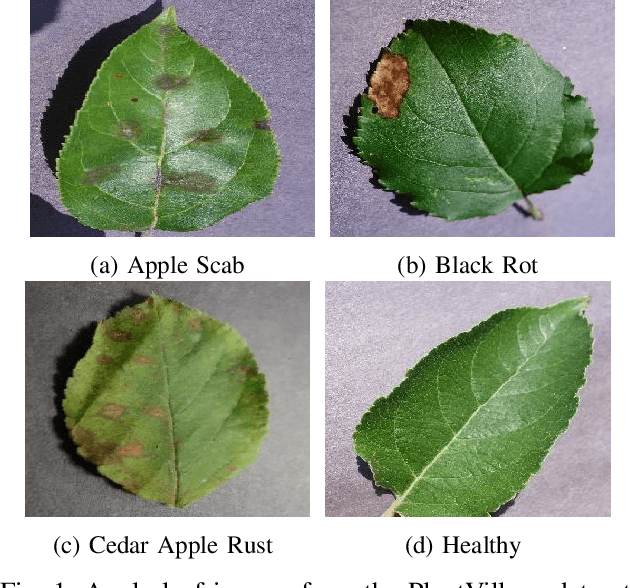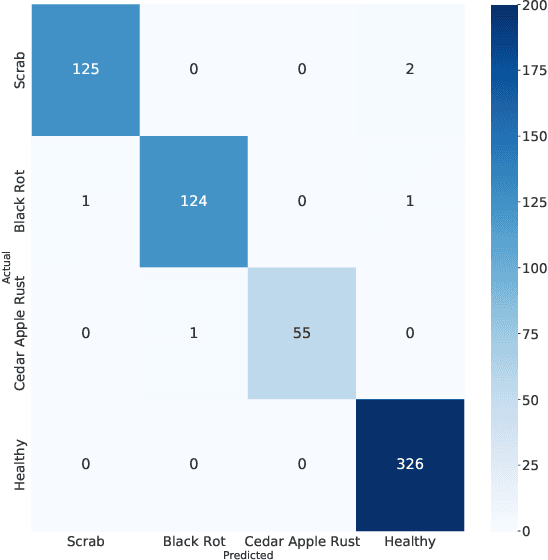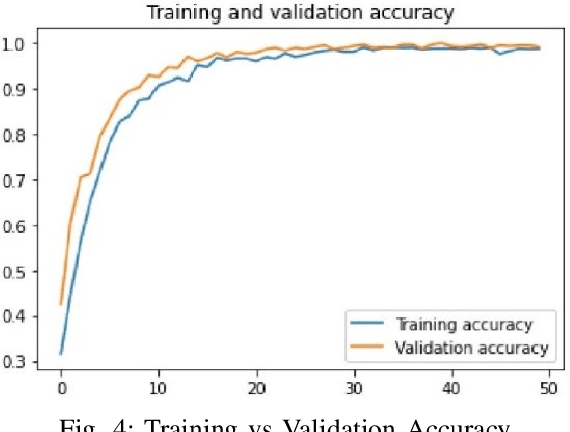Tasnim Ahmed
SLA-Centric Automated Algorithm Selection Framework for Cloud Environments
Jul 29, 2025Abstract:Cloud computing offers on-demand resource access, regulated by Service-Level Agreements (SLAs) between consumers and Cloud Service Providers (CSPs). SLA violations can impact efficiency and CSP profitability. In this work, we propose an SLA-aware automated algorithm-selection framework for combinatorial optimization problems in resource-constrained cloud environments. The framework uses an ensemble of machine learning models to predict performance and rank algorithm-hardware pairs based on SLA constraints. We also apply our framework to the 0-1 knapsack problem. We curate a dataset comprising instance specific features along with memory usage, runtime, and optimality gap for 6 algorithms. As an empirical benchmark, we evaluate the framework on both classification and regression tasks. Our ablation study explores the impact of hyperparameters, learning approaches, and large language models effectiveness in regression, and SHAP-based interpretability.
CHORUS: Zero-shot Hierarchical Retrieval and Orchestration for Generating Linear Programming Code
May 02, 2025Abstract:Linear Programming (LP) problems aim to find the optimal solution to an objective under constraints. These problems typically require domain knowledge, mathematical skills, and programming ability, presenting significant challenges for non-experts. This study explores the efficiency of Large Language Models (LLMs) in generating solver-specific LP code. We propose CHORUS, a retrieval-augmented generation (RAG) framework for synthesizing Gurobi-based LP code from natural language problem statements. CHORUS incorporates a hierarchical tree-like chunking strategy for theoretical contents and generates additional metadata based on code examples from documentation to facilitate self-contained, semantically coherent retrieval. Two-stage retrieval approach of CHORUS followed by cross-encoder reranking further ensures contextual relevance. Finally, expertly crafted prompt and structured parser with reasoning steps improve code generation performance significantly. Experiments on the NL4Opt-Code benchmark show that CHORUS improves the performance of open-source LLMs such as Llama3.1 (8B), Llama3.3 (70B), Phi4 (14B), Deepseek-r1 (32B), and Qwen2.5-coder (32B) by a significant margin compared to baseline and conventional RAG. It also allows these open-source LLMs to outperform or match the performance of much stronger baselines-GPT3.5 and GPT4 while requiring far fewer computational resources. Ablation studies further demonstrate the importance of expert prompting, hierarchical chunking, and structured reasoning.
Precision Cancer Classification and Biomarker Identification from mRNA Gene Expression via Dimensionality Reduction and Explainable AI
Oct 08, 2024Abstract:Gene expression analysis is a critical method for cancer classification, enabling precise diagnoses through the identification of unique molecular signatures associated with various tumors. Identifying cancer-specific genes from gene expression values enables a more tailored and personalized treatment approach. However, the high dimensionality of mRNA gene expression data poses challenges for analysis and data extraction. This research presents a comprehensive pipeline designed to accurately identify 33 distinct cancer types and their corresponding gene sets. It incorporates a combination of normalization and feature selection techniques to reduce dataset dimensionality effectively while ensuring high performance. Notably, our pipeline successfully identifies a substantial number of cancer-specific genes using a reduced feature set of just 500, in contrast to using the full dataset comprising 19,238 features. By employing an ensemble approach that combines three top-performing classifiers, a classification accuracy of 96.61% was achieved. Furthermore, we leverage Explainable AI to elucidate the biological significance of the identified cancer-specific genes, employing Differential Gene Expression (DGE) analysis.
Nuclei Instance Segmentation of Cryosectioned H&E Stained Histological Images using Triple U-Net Architecture
Apr 19, 2024Abstract:Nuclei instance segmentation is crucial in oncological diagnosis and cancer pathology research. H&E stained images are commonly used for medical diagnosis, but pre-processing is necessary before using them for image processing tasks. Two principal pre-processing methods are formalin-fixed paraffin-embedded samples (FFPE) and frozen tissue samples (FS). While FFPE is widely used, it is time-consuming, while FS samples can be processed quickly. Analyzing H&E stained images derived from fast sample preparation, staining, and scanning can pose difficulties due to the swift process, which can result in the degradation of image quality. This paper proposes a method that leverages the unique optical characteristics of H&E stained images. A three-branch U-Net architecture has been implemented, where each branch contributes to the final segmentation results. The process includes applying watershed algorithm to separate overlapping regions and enhance accuracy. The Triple U-Net architecture comprises an RGB branch, a Hematoxylin branch, and a Segmentation branch. This study focuses on a novel dataset named CryoNuSeg. The results obtained through robust experiments outperform the state-of-the-art results across various metrics. The benchmark score for this dataset is AJI 52.5 and PQ 47.7, achieved through the implementation of U-Net Architecture. However, the proposed Triple U-Net architecture achieves an AJI score of 67.41 and PQ of 50.56. The proposed architecture improves more on AJI than other evaluation metrics, which further justifies the superiority of the Triple U-Net architecture over the baseline U-Net model, as AJI is a more strict evaluation metric. The use of the three-branch U-Net model, followed by watershed post-processing, significantly surpasses the benchmark scores, showing substantial improvement in the AJI score
LM4OPT: Unveiling the Potential of Large Language Models in Formulating Mathematical Optimization Problems
Mar 02, 2024Abstract:In the rapidly evolving field of natural language processing, the translation of linguistic descriptions into mathematical formulation of optimization problems presents a formidable challenge, demanding intricate understanding and processing capabilities from Large Language Models (LLMs). This study compares prominent LLMs, including GPT-3.5, GPT-4, and Llama-2-7b, in zero-shot and one-shot settings for this task. Our findings show GPT-4's superior performance, particularly in the one-shot scenario. A central part of this research is the introduction of `LM4OPT,' a progressive fine-tuning framework for Llama-2-7b that utilizes noisy embeddings and specialized datasets. However, this research highlights a notable gap in the contextual understanding capabilities of smaller models such as Llama-2-7b compared to larger counterparts, especially in processing lengthy and complex input contexts. Our empirical investigation, utilizing the NL4Opt dataset, unveils that GPT-4 surpasses the baseline performance established by previous research, achieving an F1-score of 0.63, solely based on the problem description in natural language, and without relying on any additional named entity information. GPT-3.5 follows closely, both outperforming the fine-tuned Llama-2-7b. These findings not only benchmark the current capabilities of LLMs in a novel application area but also lay the groundwork for future improvements in mathematical formulation of optimization problems from natural language input.
Linguistic Intelligence in Large Language Models for Telecommunications
Feb 24, 2024



Abstract:Large Language Models (LLMs) have emerged as a significant advancement in the field of Natural Language Processing (NLP), demonstrating remarkable capabilities in language generation and other language-centric tasks. Despite their evaluation across a multitude of analytical and reasoning tasks in various scientific domains, a comprehensive exploration of their knowledge and understanding within the realm of natural language tasks in the telecommunications domain is still needed. This study, therefore, seeks to evaluate the knowledge and understanding capabilities of LLMs within this domain. To achieve this, we conduct an exhaustive zero-shot evaluation of four prominent LLMs-Llama-2, Falcon, Mistral, and Zephyr. These models require fewer resources than ChatGPT, making them suitable for resource-constrained environments. Their performance is compared with state-of-the-art, fine-tuned models. To the best of our knowledge, this is the first work to extensively evaluate and compare the understanding of LLMs across multiple language-centric tasks in this domain. Our evaluation reveals that zero-shot LLMs can achieve performance levels comparable to the current state-of-the-art fine-tuned models. This indicates that pretraining on extensive text corpora equips LLMs with a degree of specialization, even within the telecommunications domain. We also observe that no single LLM consistently outperforms others, and the performance of different LLMs can fluctuate. Although their performance lags behind fine-tuned models, our findings underscore the potential of LLMs as a valuable resource for understanding various aspects of this field that lack large annotated data.
An Efficient Transfer Learning-based Approach for Apple Leaf Disease Classification
Apr 10, 2023



Abstract:Correct identification and categorization of plant diseases are crucial for ensuring the safety of the global food supply and the overall financial success of stakeholders. In this regard, a wide range of solutions has been made available by introducing deep learning-based classification systems for different staple crops. Despite being one of the most important commercial crops in many parts of the globe, research proposing a smart solution for automatically classifying apple leaf diseases remains relatively unexplored. This study presents a technique for identifying apple leaf diseases based on transfer learning. The system extracts features using a pretrained EfficientNetV2S architecture and passes to a classifier block for effective prediction. The class imbalance issues are tackled by utilizing runtime data augmentation. The effect of various hyperparameters, such as input resolution, learning rate, number of epochs, etc., has been investigated carefully. The competence of the proposed pipeline has been evaluated on the apple leaf disease subset from the publicly available `PlantVillage' dataset, where it achieved an accuracy of 99.21%, outperforming the existing works.
Huruf: An Application for Arabic Handwritten Character Recognition Using Deep Learning
Dec 24, 2022



Abstract:Handwriting Recognition has been a field of great interest in the Artificial Intelligence domain. Due to its broad use cases in real life, research has been conducted widely on it. Prominent work has been done in this field focusing mainly on Latin characters. However, the domain of Arabic handwritten character recognition is still relatively unexplored. The inherent cursive nature of the Arabic characters and variations in writing styles across individuals makes the task even more challenging. We identified some probable reasons behind this and proposed a lightweight Convolutional Neural Network-based architecture for recognizing Arabic characters and digits. The proposed pipeline consists of a total of 18 layers containing four layers each for convolution, pooling, batch normalization, dropout, and finally one Global average pooling and a Dense layer. Furthermore, we thoroughly investigated the different choices of hyperparameters such as the choice of the optimizer, kernel initializer, activation function, etc. Evaluating the proposed architecture on the publicly available 'Arabic Handwritten Character Dataset (AHCD)' and 'Modified Arabic handwritten digits Database (MadBase)' datasets, the proposed model respectively achieved an accuracy of 96.93% and 99.35% which is comparable to the state-of-the-art and makes it a suitable solution for real-life end-level applications.
Fruit Quality Assessment with Densely Connected Convolutional Neural Network
Dec 08, 2022



Abstract:Accurate recognition of food items along with quality assessment is of paramount importance in the agricultural industry. Such automated systems can speed up the wheel of the food processing sector and save tons of manual labor. In this connection, the recent advancement of Deep learning-based architectures has introduced a wide variety of solutions offering remarkable performance in several classification tasks. In this work, we have exploited the concept of Densely Connected Convolutional Neural Networks (DenseNets) for fruit quality assessment. The feature propagation towards the deeper layers has enabled the network to tackle the vanishing gradient problems and ensured the reuse of features to learn meaningful insights. Evaluating on a dataset of 19,526 images containing six fruits having three quality grades for each, the proposed pipeline achieved a remarkable accuracy of 99.67%. The robustness of the model was further tested for fruit classification and quality assessment tasks where the model produced a similar performance, which makes it suitable for real-life applications.
DEPTWEET: A Typology for Social Media Texts to Detect Depression Severities
Oct 10, 2022Abstract:Mental health research through data-driven methods has been hindered by a lack of standard typology and scarcity of adequate data. In this study, we leverage the clinical articulation of depression to build a typology for social media texts for detecting the severity of depression. It emulates the standard clinical assessment procedure Diagnostic and Statistical Manual of Mental Disorders (DSM-5) and Patient Health Questionnaire (PHQ-9) to encompass subtle indications of depressive disorders from tweets. Along with the typology, we present a new dataset of 40191 tweets labeled by expert annotators. Each tweet is labeled as 'non-depressed' or 'depressed'. Moreover, three severity levels are considered for 'depressed' tweets: (1) mild, (2) moderate, and (3) severe. An associated confidence score is provided with each label to validate the quality of annotation. We examine the quality of the dataset via representing summary statistics while setting strong baseline results using attention-based models like BERT and DistilBERT. Finally, we extensively address the limitations of the study to provide directions for further research.
* 17 pages, 6 figures, 6 tables, Accepted in Computers in Human Behavior
 Add to Chrome
Add to Chrome Add to Firefox
Add to Firefox Add to Edge
Add to Edge